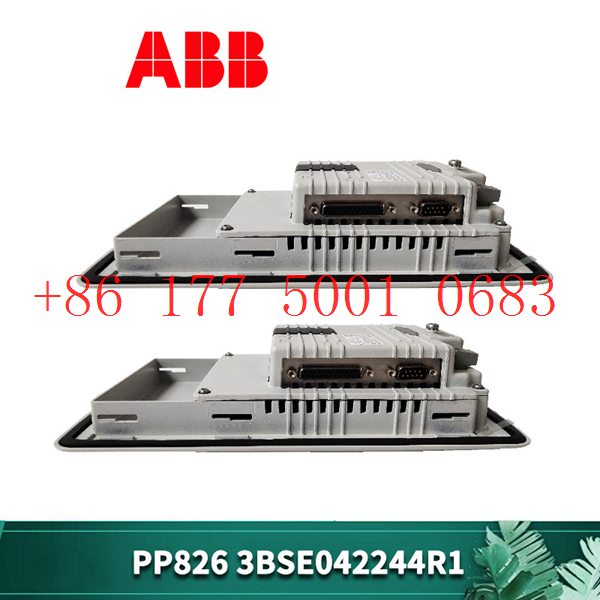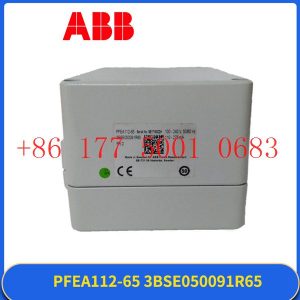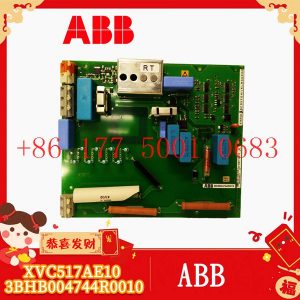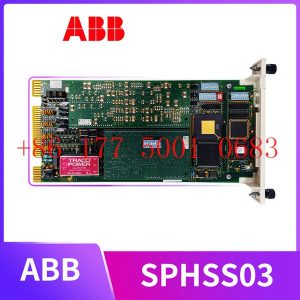Description
hardware flow control. It is an ideal choice in the field of industrial automation.
Figure 4 Tool Framework
2.3Smart component creation
Call the Rotator component: This component is used to allow the rotatable grinding rotor to rotate during simulation to simulate the real grinding scene. In the
parameters of the Rotator component, set the reference to object, the reference object to the frame l, and the object to a copy of the rotor. (2) The rotary grinding rotor
can be rotated, and the speed is l20mm/s (the speed of the grinding head will affect the quality of the finished product) ), the reference center axis is: axis (based on frame
l, centerpoint x, y,: set to 0, 0, 0, Axis set x, y,: 0, 0, l000mm).
Call the Attach component: This component is used to allow the rotatable grinding rotor to be integrated with the tool body. When the tool body is installed
on the flange, it can follow the movement of the flange. In the parameters of the Attach component, set the sub-object to be a copy of the rotor (2) for the rotatable
polishing rotor, and the parent object is the tool body of a copy of the rotor. The offset and orientation are
based on the offset of point B relative to the origin. For setting, you can use the measurement tool in Robotstudio software to measure, and then set the parameters
after measurement.
Verification: Install a copy of the rotor tool body onto the robot flange, and then click Execute in the Attach component. You can observe whether the position of the
rotatable grinding rotor is correct at this time. If there is a deviation, adjust the position in time, as shown in the figure. 5 shown.
Figure 5 Tool installation
2.4 Create tool coordinate system
Use the six-point method to create the tool coordinate system Too1data on the robot teach pendant at the center of the rotor. Change the tool coordinate
system to Too1data in the basic options. At this time, click on the robot manual linear and you can drag the robot to move linearly at will.
2.5 Creating trajectories and programming
Determine the trajectory: According to the requirements of the work task, design the grinding trajectory around the workpiece and determine the trajectory
points and transition points required for the grinding trajectory. The grinding action process is shown in Figure 6.
Setting I/O and programming: Yalong IY-l3-LA industrial robot deburring and grinding system control and application equipment adopts 0sDC-52 6/o
communication board, the address is 10, Do1 is the digital output signal, the address is 1 . First set the I/O board, then set the I/O digital output signal Di1,
and then program on the simulation teaching pendant. The procedure is as follows:
PRoCmain()
setDo1: Set the Do1 signal to allow the external grinding rotor to start rotating.
waitTime1: The robot stays in place and does not move, waits for 1s, and lets the polishing rotor turn to the specified speed, transition
MoveAbsjjpos10NoEoffs,v1000,z50,Too1data1: The robot moves to the initial point jpos10 above point p10. Point jpos10 is used as the starting
point and end point of the robot”s action.
Move4p10,v1000,z50,Too1data1: Move straight line grinding to point p10
Move4pL0,v1000,z50,Too1data1: Move straight line grinding to pL0 point
Move4p30,v1000,z50,Too1data1: Move straight line grinding to point p30
Move4p40,v1000,z50,Too1data1: Move straight line grinding to p40 point
Move4p10,v1000,z50,Too1data1: Move straight line grinding to point p10
MoveAbsjjpos10NoEoffs,v1000,z50,Too1data1: The robot moves to the initial point jpos10 above point p10
waitTime1: wait 1s, transition
ResetDo1: Reset the Do1 signal to stop the rotor ENDPRoC
2.6 Simulation design and verification
Simulation design: Create a smart component to input the Di1 signal, and use the Di1 signal to simulate the external polishing start signal to
execute the Rotator component and Attach component of the smart component to achieve the visual effect of rotating and polishing the polishing rotor.
In the workstation logic design, the smart component input Di1 signal is associated with the robot Do1 signal, so that the robot signal Do1 can control
the smart component input Di1 signal, thereby controlling the start and stop of the rotation of the polishing rotor.
Verification: In the program of the teaching pendant, first set the pp command to move to Main, and then set the robot startup mode to automatic.
Click play in the simulation of Robotstudio software to verify whether the trajectory is consistent with the assumption, and optimize the path in time for
problems existing in the simulation.
3Summary and outlook
This design is based on the programming simulation of the Yalong Y4-1360A industrial robot deburring system to control the grinding robot workstation.
It covers aspects such as creating a workstation, setting
up tools, creating smart components, creating tool coordinate systems, creating trajectories, programming, simulation design, and verification. Starting
with it, the polishing simulation of the workstation is realized through the smart component function of Robotstudio software. The animation effect is intuitive
and lifelike, which not only facilitates teaching demonstrations, but also facilitates program debugging, and has application value for both production and teaching.
In the planning and design of the workpiece grinding trajectory, according to the different roughness and grinding amount process requirements of the
workpiece, the rotation speed, feed speed, feed amount, and grinding angle of the grinding rotor are also different. The feed amount can be adjusted in
time according to the on-site conditions. , feed speed, rotor speed, grinding angle and other parameters. After appropriate adjustments, the motion trajectory is written with the
corresponding program on the Robotstudio software to further reduce the possibility of robot collisions and singular points contained in the trajectory
during the actual debugging process. ,Optimize paths and improve debugging efficiency.
https://www.xmamazon.com
https://www.xmamazon.com
https://www.plcdcs.com/
www.module-plc.com/
https://www.ymgk.com
05701-A-0361 Backplane Serial communication controller and monitor
810-800081-022 LAM Circuit board module
05074-A-0122 05704-A-0121 05704-A-0131 Relay interface card
810-066590-004 LAM Circuit board module
T8403C Trusted TMR 24Vdc digital input module
05701-A-0325 DC input card
T9110 AADvance controller
T9451 AADvance controller Controller module
T9402 AADvance controller
T8311 Trusted TMR expander Interface
T8151B Trusted ® Communication Interface Adapter
T8310 Trusted TMR expander Interface
05704-A-0145 Four-channel controller card 4-20 MA input
GE IS215VCMIH2BB IS200VCMIH2BCC Mark VI System board components
E1740A Agilent Time interval analyzer
GE IS215VCMIH2CA IS200VCMIH2CAA VME communication card
E1406A Agilent Time interval analyzer
05704-A-0144 Four channel control card catalytic input
FBM233 P0926GX FBM233 Field device system integration module
IS420UCSBH1A Mark VIe series UCSB controller
DDC779BE02 3BHE006805R0002 Control panel and control system
MMS6120 Dual channel bearing vibration measurement module MMS 6120
24765-02-01 Housing expansion sensor assembly
CI526 3BSE006085R1 Interface Module
3BSE005831R1 PM632 Processor Unit
3BSE004773R1 CS513K02 MasterBus 300E communication interface
PU512V1 3BSE004736R1 Real Time Accelerator (RTA) Module
3BSE004726R1 DSTD197 Connection Unit 8 ch, 120V
3BSE004723R1 DSTD190 Connection Unit 32 Ch
3BSE004382R1 DSRF185 ABB
DSDX180 3BSE003859R1 Digital In / Out Module
3BSE003832R1 SC510 Submodule Carrier without CPU
3BSE003829R1 CI532V04 AC410 » Communication Modules
3BSE003827R1 CI532V02 MODBUS Interface, 2 ch
SA167 3BSE003390R1 Power Supply Unit AC 115V / DC
SA168 3BSE003389R1 Power Supply Unit
07KR51-230VAC 1SBP260511R1001 Controller Basic Unit
07KP93 GJR5253200R1161 Communication Processor
ABB 07KP90 GJR5251000R0303 Communications Module
07KP53 1SBP260162R1001 MODBUS Coupler (07KP53)
07DC92 GJR5252200R0101 Configurable Digital I/O Module
07DC91 GJR5251400R0202 Digital I/O module
07CR41-c12 1SBP260020R1001 Advant Controller Basic Unit
07CR41 1SBP260020R1001 07CR41 Advant Controller Basic Unit – 24VDC
07AI91 GJR5251600R0202 Analog I/O, module
07AC91 GJR5252300R0101 ABB Advant OCS Analog I/O Unit
HIEE320693R0001 NU8976A Power module
HIER466665R0099 NU8976A99 Excitation module









Reviews
There are no reviews yet.